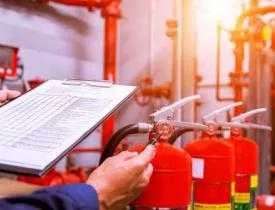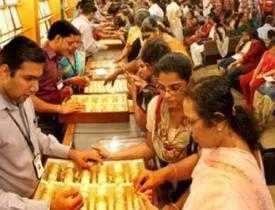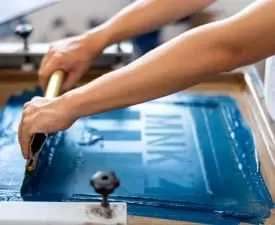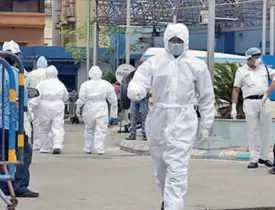Description
Course Name: Diploma in Fire and Safety Management
Course Id: DFSM/Q0001.
Education Qualification: 12th Pass.
Duration: 370 Hrs.
How You will Get Diploma Certificate:
Step 1- Select your Course for Certification.
Step 2- Click on Enroll Now.
Step 3- Proceed to Enroll Now.
Step 4- Fill Your Billing Details and Proceed to Pay.
Step 5- You Will be Redirected to Payment Gateway, Pay Course and Exam Fee by Following Options.
Card(Debit/Credit), Wallet, Paytm, Net banking, UPI and Google pay.
Step 6- After Payment You will receive Study Material on your email id.
Step 7- After Completion of Course Study give Online Examination.
Step 8- After Online Examination you will get Diploma Certificate soft copy(Scan Copy) and Hard Copy(Original With Seal and Sign).
Step 9- After Certification you will receive Prospect Job Opportunities as per your Interest Area.
Online Examination Detail:
- Duration- 120 minutes.
- No. of Questions- 60. (Multiple Choice Questions).
- 10 Questions from each module, each carry 10 marks.
- Maximum Marks- 600, Passing Marks- 40%.
- There is no negative marking in this module.
| How Students will be Graded: | ||
| S.No. | Marks | Grade |
| 1 | 91-100 | O (Outstanding) |
| 2 | 81-90 | A (Excellent) |
| 3 | 71-80 | A (Very Good) |
| 4 | 61-70 | B (Good) |
| 5 | 51-60 | C (Average) |
| 6 | 41-50 | P (Pass) |
| 7 | 0-40 | F (Fail)v |
Benefits of Certification:
- Government Authorized Assessment Agency Certification.
- Certificate Valid for Lifetime.
- Lifetime Verification of Certificate.
- Free Job Assistance as per your Interest Area.
Syllabus
Diploma in fire and safety Engineering
Special Fire Hazards
Define fire hazard, Identify types of hazards, Recognize common ignition sources, Recognize and categorize hazardous materials, common fire hazards, ignition source–electrical hazards, Electrical Fires, ignition source—heating, open flame ignition sources, other ignition sources, Static Electricity, hazards of handling, using and storing materials, Vacant Buildings, Flammable Liquids, Miscellaneous Problems, Flammable Liquids, Combustible Liquids, Container and Portable Tank Storage, Electrical Equipment, Fuel Dispensing, Paint Booths, Flammable gas.
Fire Protection Systems
Types of automatic sprinklers, Air Conditioning and Refrigeration, Duct and Ventilation Systems, Boilers, Compressed Air Systems, Sewage Treatment and Disposal, Water Treatment and Purification, Interior Water Distribution and Interior Waste Systems, Plumbing Planning and Estimating, Contingency Support, automatic sprinkler system characteristics, Types of Sprinkler Systems, Wet pipe System, Dry Pipe System, Differential Dry Pipe Valve, Low-Differential Dry Pipe Valve, Mechanical or Latched-Clapper Dry Pipe Valve, Water Deluge System, Water deluge system, Pre Action System, Combined System
Search and Rescue Techniques
Community Local Rescuers, Outside Community Resources, Team Composition, Search in Slightly Damaged Buildings, Human Crutch, Pick-a-Back (Reverse), Fireman’s Lift, Rescue Crawl, Removal Downstairs, Bowline Drag, Precautions Whilst Moving Inside the Damaged Building, Community Local Rescuers, Outside Community Resources, Chair Knot, Square Lashing, Diagonal Lashing, Figure of Eight Lashings, Round lashing, stretcher and casualty transportation, Standard Ambulance Stretcher, Improvised Stretcher Preparation, Four Stretcher Bearer Loading, water rescue, Improvised Swimming and Floating Aids, Empty Tins and Jerri canes, Empty glass bottles, Bamboo Bundles, Metal pitcher, Rules of Breast-Line.
Fire Safety Risk Assessment
Be a suitable and sufficient assessment of the fire risk, Identify any group pf persons especially at risk, Identify the fire hazards within your premises, Identify the people at risk, Record the findings, produce an emergency plan, instruct, inform and train, Arrange to regularly review the assessment, Identify the fire hazards within your premises, Identify the people at risk, Determine the potential consequences if a fire was to occur, Replace highly flammable materials with less flammable ones, Record the findings, produce an Emergency Plan, instruct, inform and train, Arrange to regularly review the assessment, Common pitfalls in the fire risk assessment process.
Industrial Safety Management
Health Hazards in Construction, Concept of Prevention through Design, PTD for Health Hazards in Construction, Virtual Prototype based Simulator for EOT Crane, Virtual Reality Application in Training, Advantages of the VR Training System, An Introduction to Simulators, Environment and Needs, Methodology for Development of Crane Simulator, 3D Modeling and Texturing, Coordinate Systems, Points, Lines and Faces, Image Mapping, Immersive and Interactive Environment, Geometric Transformations, Lights, Cameras and Shading and Surface Characteristics, Interaction Implementation, Setting up Collision Among Components, Developed Virtual Environment
Health Safety Environment
Course Information, Training System, Job Role, General Information, Learning Outcome, Assessment Criteria, Trade Syllabus, progression pathways, assessment & certification, learning outcome, Identify marking and evaluate performance of explosives., Practice good housekeeping and study egress and safe access, Identify causes of accident during material handling, Plan and execute hose and hose fittings, Design turntable ladders, water tender and special equipment., Identify Types of water relay system, Select and use PPE, care and maintain the same, Apply the method of bulk storage system of LPG/CNG..






